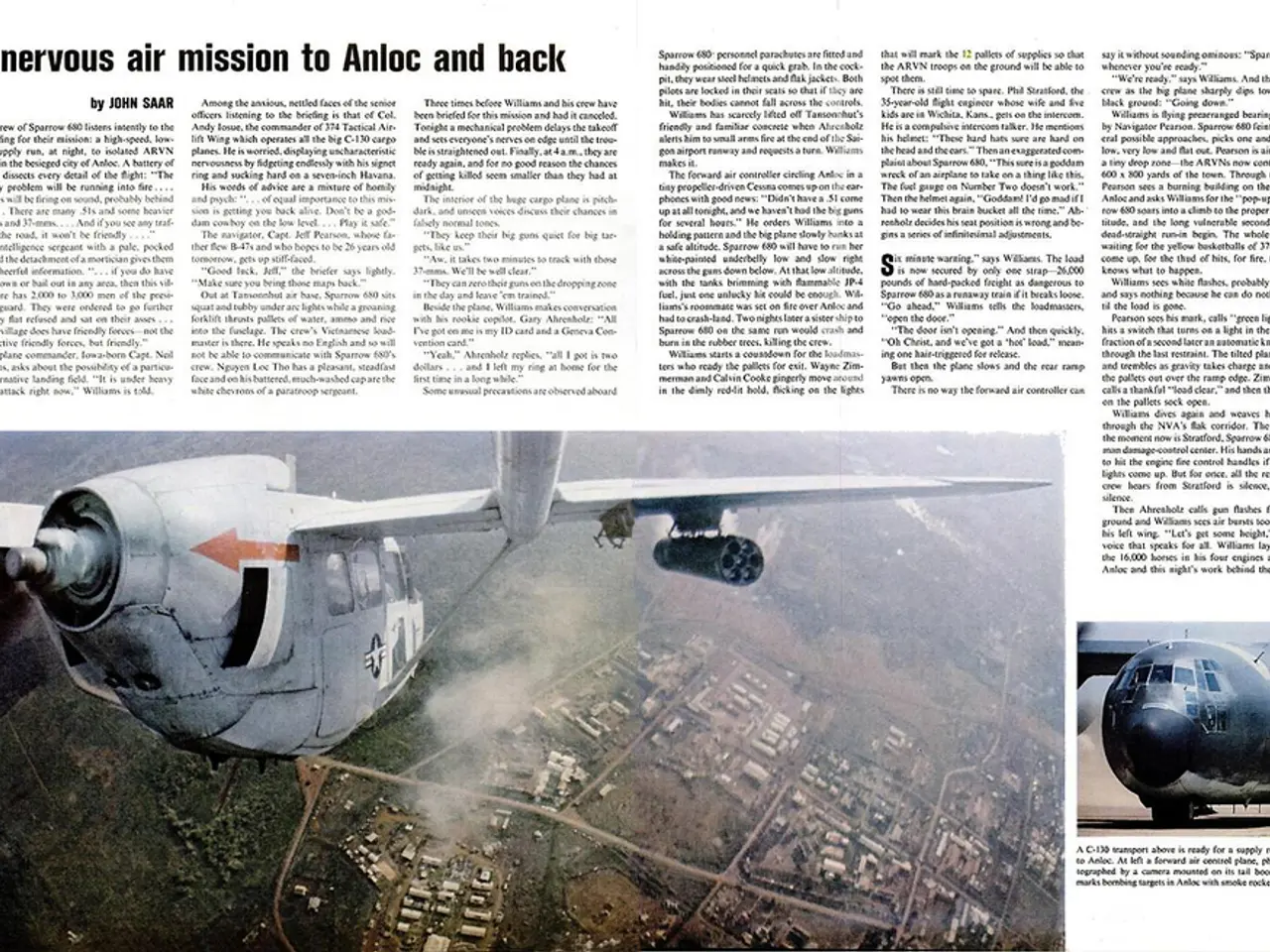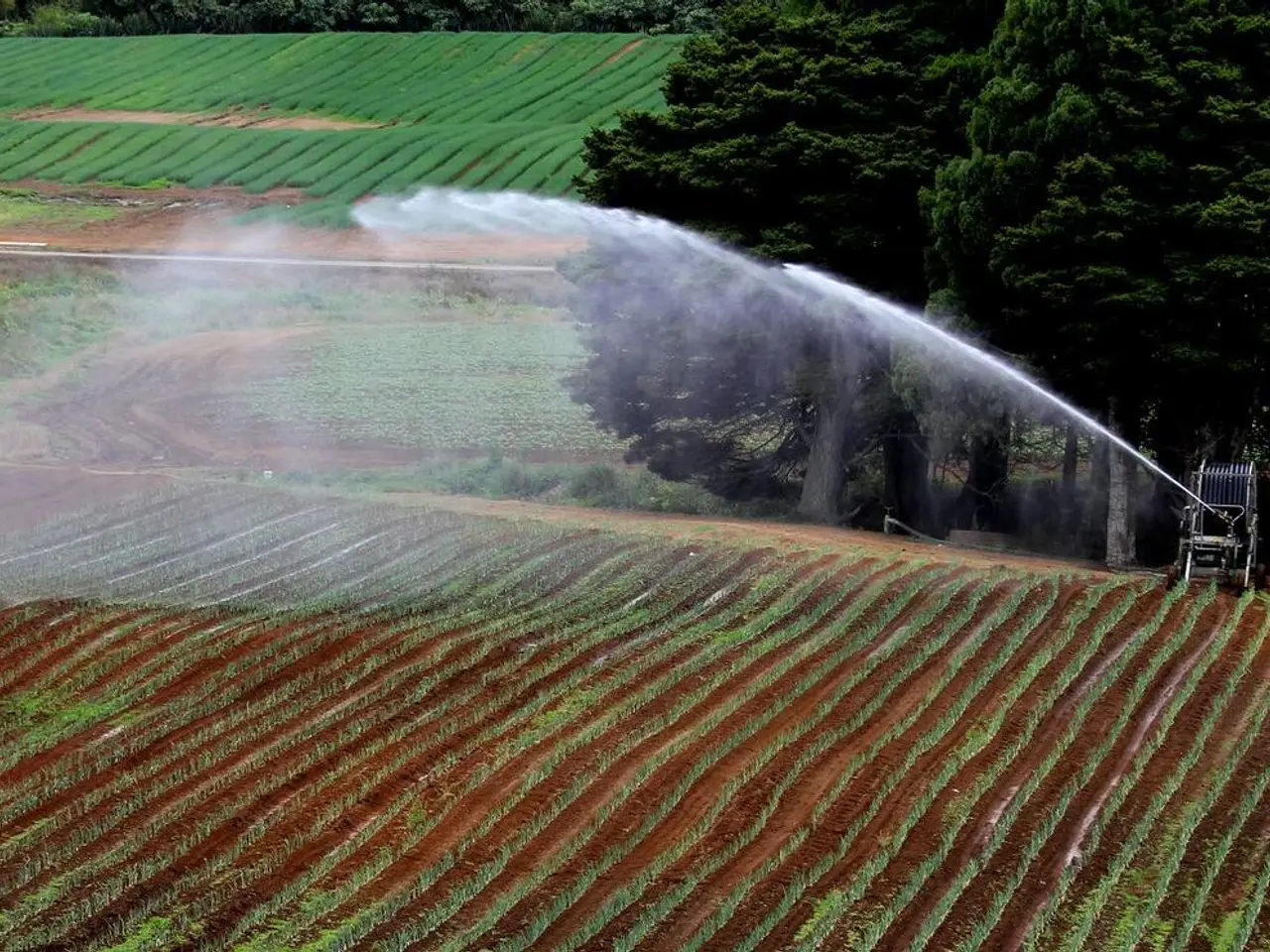Enhancements and Sensory Equipment Installations in U.S. Air Force Unmanned Aerial Vehicles
Upgrading USAF UAVs for Enhanced Situational Awareness
The United States Air Force (USAF) is enhancing its Unmanned Aerial Vehicles (UAVs) through strategic upgrades and advanced sensor packages. These advancements aim to bolster the intelligence, surveillance, and reconnaissance (ISR) capabilities of the USAF UAV fleet, providing real-time intelligence and improving the understanding of operational environments for operators.
Enhanced Situational Awareness (ESA) offers numerous benefits for USAF UAVs, including improved threat detection capabilities, enhanced target identification precision, and a better understanding of dynamic battlefield scenarios. ESA leads to quicker decision-making and increased mission success rates, making UAVs invaluable assets in modern warfare.
Key players in developing advanced sensor packages for USAF UAVs include aerospace technology companies, defense contractors, research institutions, universities, and government agencies like the Department of Defense. Upgraded sensor packages offer improved surveillance, target acquisition, and intelligence gathering capabilities.
Future trends in upgrades and sensor package advancements for USAF UAVs focus on integrated multi-intelligence (Multi-INT) sensor pods, AI-driven autonomy, advanced radar technologies, and novel propulsion systems enhancing endurance and stealth.
One significant advancement is the miniaturization of Multi-INT sensor payloads. General Atomics’ High Roller pod integrates SIGINT, Synthetic Aperture Radar (SAR), and full-motion video into sub-200-pound packages suitable for medium-altitude long-endurance (MALE) drones. This reflects an overall trend toward modular, multi-mission sensor systems combining electronic warfare, signals intelligence (SIGINT), and imaging.
Artificial Intelligence (AI) and machine learning integration are also crucial for the next generation of USAF UAVs. AI supports autonomous threat detection and response, such as enabling operation in GPS-denied environments, drone swarm countermeasures, and real-time situational awareness improvements. Examples include Shield AI’s Hivemind, U.S. Army’s Leonidas system, and collaborations like Anduril and OpenAI for advanced vision systems.
Radar technology challenges and advances play a significant role in UAV sensor package development. While active electronically scanned array (AESA) radars offer advanced capabilities, their high power consumption and cooling requirements limit their effectiveness on smaller UAVs or legacy MALE platforms. Efforts like BAE’s Ultra-Low-Power AESA radar reduce power demands but at some cost to range, illustrating trade-offs in deploying high-performance sensors on UAVs.
Hydrogen fuel-cell propulsion emerges as a promising solution for extending UAV endurance while maintaining low acoustic and thermal signatures. For example, Skyeton’s Raybird hydrogen UAV demonstrated 15-hour flight capability, allowing UAVs to carry heavier sensors stealthily over longer missions.
Integrated electronic warfare and cyber capabilities are being deployed to expand UAV sensor packages from traditional intelligence gathering into contested network disruption roles. Next-generation jammers that fuse electromagnetic disruption with embedded cyber payloads are being developed, enhancing UAVs' multi-domain sensor functionality.
Networked communication advances, such as rugged private 5G base stations and mesh-enabled software-defined radios, ensure resilient, low-latency data links critical for UAV coordination and sensor data exchange, especially in denied or degraded environments.
These technological advancements, backed by ongoing research and high-profile programs, will define the next generation of USAF UAV sensor packages and upgrades through the 2030s. The sensor packages are designed to be versatile and customizable based on the specific mission requirements, ensuring that USAF UAVs remain at the forefront of technological innovation.
Overcoming budget constraints and training requirements is crucial for harnessing the full capabilities of upgraded sensor packages and ensuring that USAF UAVs remain at the forefront of technological innovation. Software integration involves incorporating the upgraded sensor packages into the UAV's software system, ensuring data flow and communication between the sensors and the core systems.
Advancements in sensor technology have led to the integration of multi-sensor packages on UAV platforms, enabling synergistic data fusion for enhanced situational awareness. Sensor package options for USAF UAVs consist of advanced sensors such as electro-optical/infrared (EO/IR) cameras, Synthetic Aperture Radar (SAR), and Signals Intelligence (SIGINT) systems.
The incorporation of upgraded sensor packages enables UAVs to gather and transmit real-time data with higher precision and accuracy. Integration processes for UAV upgrades involve compatibility testing and software integration. By leveraging advanced sensor technologies and data analytics, Enhanced Situational Awareness enables proactive responses to evolving situations, minimizing risks and enhancing overall mission outcomes.
Future trends in UAV upgrades include autonomous systems, AI and machine learning integration, advanced sensor technologies, and enhanced communication systems. The seamless integration of sensor packages into UAV systems is essential for staying abreast of technological advancements and maintaining a technological edge in modern warfare scenarios. Upgraded sensor packages enhance the overall situational awareness of operators and decision-makers, facilitating quicker response times and improved mission outcomes.
These upgrades aim to improve mission effectiveness and situational awareness. Compatibility testing ensures that the upgraded components align with existing systems to function seamlessly. Case Studies of Successful UAV Upgrades showcase the tangible benefits of advanced technologies in enhancing UAV capabilities, such as improved reconnaissance accuracy and increased situational awareness.
The USAF's UAV upgrade initiatives are iterative, demonstrating a commitment to staying abreast of emerging threats and challenges. Training requirements for USAF UAV upgrades are essential due to the complexity of new sensor technologies and improved functionalities, necessitating specialized training for operators and maintenance personnel.
- The e-learning industry is providing training solutions for USAF personnel to master the use of advanced sensor packages and autonomous systems on UAVs, enhancing their ability to stay at the forefront of technological innovation in the business of education-and-self-development.
- Finance is crucial for the investing community in supporting the development of these upgrades, with the technology industry playing a significant role in financing research and development projects in the general-news sector.
- The integration of AI and machine learning into UAV sensor packages is not only enhancing their operational capabilities but also creates new business opportunities in areas like threat detection, drone swarm countermeasures, and real-time situational awareness improvements for tech companies.
- The enhanced situational awareness offered by upgraded UAVs is not only improving mission success rates but is also shaping the future of education and self-development by providing real-time intelligence and insights into a variety of operational environments, offering opportunities for research and analysis in the field of education-and-self-development.




